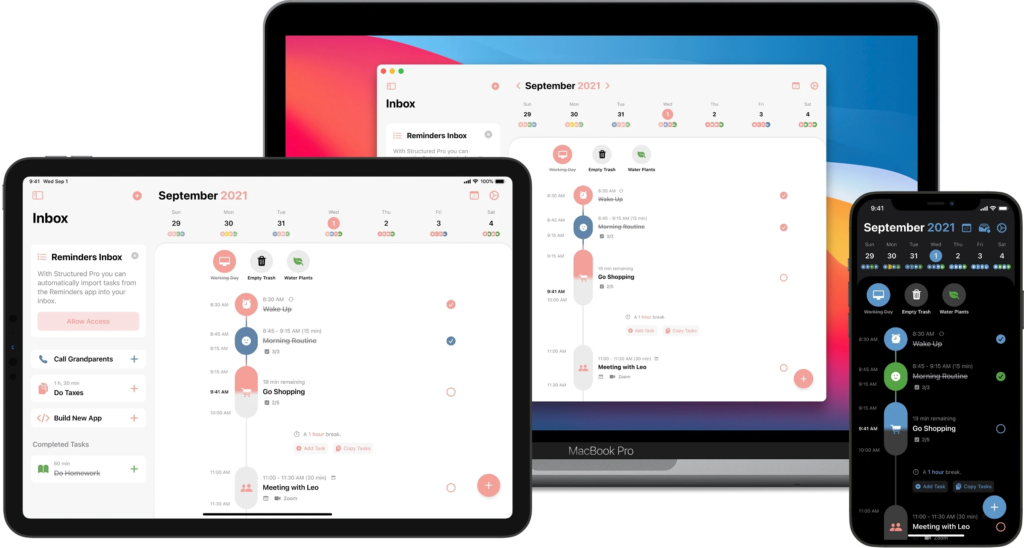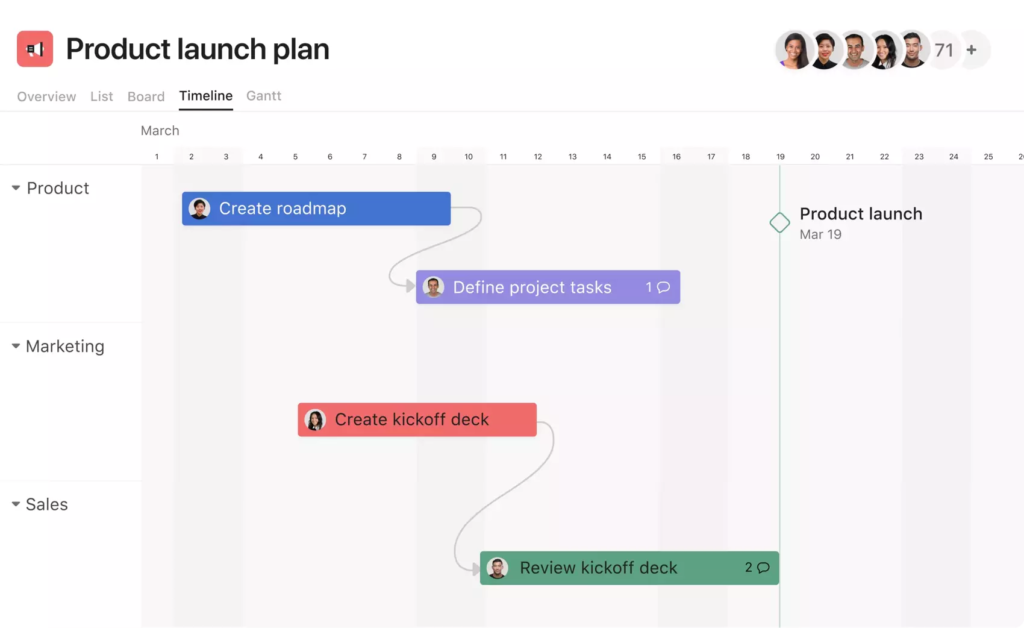What is Structured
Structured is a web-based daily planner application designed to enhance productivity and task management. It offers features like customizable task management, time tracking, goal setting, and progress tracking. The app is accessible across multiple platforms and integrates with other productivity tools. It’s suitable for individuals and teams aiming to efficiently manage tasks and projects. Structured’s user-friendly interface and cross-platform compatibility make it a comprehensive solution for daily and weekly planning.

Key Features of Structured
- Customizable Task Management: Structured allows users to tailor their task management experience. Users can set priorities, deadlines, and categorize tasks, enhancing organization and focus.
- Time Tracking: This feature helps users monitor how much time they spend on each task. It’s useful for productivity analysis and time management.
- Goal Setting: Users can set short-term and long-term goals, making it easier to track progress and stay motivated.
- Progress Tracking: Structured provides visual tools for tracking task and project progress, offering insights into productivity and areas for improvement.
- Cross-Platform Accessibility: The app is accessible across various devices, ensuring seamless task management and planning regardless of the user’s location or device.
- Integration with Other Tools: Structured integrates with other productivity tools, streamlining workflows and enhancing overall efficiency
What is Asana
Asana stands out as a versatile project management tool, ideal for various team sizes. Its user-friendly interface, coupled with diverse features like task management, project visualization (including Kanban and Gantt charts), and robust team collaboration tools, makes it a top choice. Additionally, Asana’s integration capabilities with other apps enhance workflow efficiency. Offering a range of pricing plans, including a free version for smaller teams, Asana caters to a broad spectrum of organizational needs. It’s particularly recommended for its ease of use, extensive integrations, and comprehensive project management features.

Key Features of Asana
- Task Management: Asana excels in task management, allowing users to create, assign, and track tasks efficiently. This feature ensures that team members are always aware of their responsibilities and deadlines, promoting productivity and accountability.
- Project Visualization: With options like Kanban boards and Gantt charts, Asana offers versatile visualization tools. These features aid in understanding the project flow and milestones, making it easier to manage timelines and resources.
- Team Collaboration: Asana fosters seamless team collaboration. It allows for easy communication within tasks, sharing of files, and updating progress, thus keeping everyone on the same page and enhancing teamwork.
- Integration Capabilities: The platform integrates with a wide range of other applications and tools, streamlining workflows and automating processes. This integration makes it a flexible tool that can adapt to various business ecosystems.
- Customization and Reporting: Asana offers extensive customization options, including custom fields and reporting features. These allow teams to tailor their project management experience and generate insightful reports for better decision-making.
- User-Friendly Interface: The intuitive interface of Asana is designed for ease of use, making it accessible for teams regardless of their technical expertise. This simplicity ensures a smooth onboarding process and enhances overall user experience.
Structured vs Asana: Features
| Features | Structured | Asana |
|---|---|---|
| Integrations | Apple Calendar, Google Calendar, Outlook, Microsoft Exchange, Yahoo Calendar, and AOL Calendar | Google Drive, Slack, Zoho Cliq, Zapier, Jira, Zoom, Toggl Track, Loom, Harvest, Gmail |
| Calendar | Yes | Yes |
| Platforms | macOS, iOS, Android | macOS, iOS, Android, Web, and Windows |
| Task Management | Task editing and creation, labels, tags, progress, prioriy and recurring tasks | Task creation and assignment, due date setting, progress tracking, project organization, tagging, comments, file attachments, task conversations |
| Natural Language Processing | No | Yes |
| Time Blocking | Yes | No |
| Analytics | No | Yes |
| Meeting Scheduler | No | No |
| Time Zones | No | Yes |
| Reminders | Yes | Yes |
| Customer Support | Average | Average |
| 1:1 User Onboarding | No | Asana offers customer success services including tailored training and consultation, which might include onboarding calls for new users, especially in enterprise plans |
| Pricing | A monthly subscription for $2.99, a yearly subscription for $9.99, and a lifetime subscription for $29.99, each providing full access to the app’s features. | Asana offers three plans: the free Personal plan for basic needs, the Starter plan at $11.59 for expanded features like timeline view, and the Advanced plan at $25.69 for comprehensive project management tools including time tracking and advanced customization. |
Structured vs Asana: Pricing
Structured Pricing
Structured offers three pricing plans:
(i) Monthly Subscription: $2.99
(ii) Yearly Subscription: $9.99
(iii) Lifetime Subscription: $29.99
All these subscriptions provide access to the same features and unlimited use of the app, the free version of Structured allows basic planning and organization, but upgrading to one of these plans unlocks additional features
Asana Pricing
Asana offers three main pricing tiers:
(i) Personal: This is a free plan, suitable for small teams or individuals. It includes basic project and task management features and supports collaboration with up to 10 team members. Users have access to unlimited tasks, projects, messages, and file storage.
(ii) Starter: Priced at $11.59 per user per month, this plan builds on the Personal plan. It allows collaboration with up to 500 teammates and introduces additional features like timeline and Gantt chart views, along with the ability to use forms and automation.
(iii) Advanced: At $25.69 per user per month, the Advanced plan includes all features from the lower tiers and adds functionalities such as goals, time tracking, proofing, approvals, and more advanced customization options.
Each tier offers a range of features to accommodate different needs, from individual use to more complex team collaboration and project management requirements.
Structured vs Asana: Reviews
Structured Review
Structured is a user-friendly daily planner app praised for its ability to integrate tasks with calendar entries, offering a streamlined approach to time management. Its simple interface and visual timeline are particularly appreciated, making it easy to organize and view daily activities. However, some users might find its features limited compared to more comprehensive productivity tools. Additionally, the absence of certain functionalities like natural language processing and advanced task analytics may be a drawback for users seeking more sophisticated planning capabilities.
Asana Review
Asana, a popular project management tool, is praised for its intuitive interface and robust feature set, making it an excellent choice for teams of all sizes. Key strengths include versatile project views, effective task and assignment management, and smooth team collaboration. Users benefit from a variety of project views like Kanban Board, Timeline, and Gantt, alongside templates for quick project setup. Asana’s progress tracking and integration with various tools like Google Suite and Microsoft 365 further enhance its utility. However, the tool’s complexity might be overwhelming for beginners, and the cost of the Advanced package may be a concern for smaller teams or individual users.
Which One Should You Pick
Consider Structured if
- You Want a Visual Daily Planner: Structured is a good choice for those who prefer a visual representation of their tasks and calendar events, offering a clear, timeline-based view of daily activities.
- You Need Basic Task Management: If your requirements are centered around basic task organization without the need for advanced analytics or extensive features, Structured meets these needs effectively.
- You Prefer a Simplistic Interface: For users seeking an app with a straightforward, user-friendly interface, Structured’s minimalist design can be appealing, though it might lack the complexity desired by power users.
Consider Asana if
- You’re Managing Diverse Projects: Asana is suitable for various project types, offering flexibility with multiple view options like Kanban and Gantt charts. However, it might take time to master all the features.
- You Value Integration: Asana’s integration with many tools (like Google Suite, Microsoft 365) enhances its utility. But, be mindful that depending on external apps could complicate workflows.
- You Prioritize Team Collaboration: Asana is strong in team collaboration features, making it easy to track responsibilities and updates. Still, for very small teams or individual use, the platform might offer more than needed.
Best Structured and Asana Alternatives
- Akiflow: Akiflow is a time management app offering time blocking, task scheduling, and integrations with various tools. It focuses on productivity and organization through a unified task and appointment interface.
Akiflow Price: $19 per month, paid annually - Microsoft To Do: Microsoft To Do is a task management app integrated with Office 365. It helps organize daily tasks, set reminders, and sync across devices. Ideal for both personal and professional use, it promotes productivity with features like shared lists and task prioritization. This app is especially beneficial for users within the Microsoft ecosystem.
Microsoft To Do Price: Free - Sunsama: Sunsama is a daily planner that helps professionals stay focused & productive by combining tasks, calendars, & emails. It offers features like guided planning, timeboxing, & automatic syncing.
Sunsama Price: $16 per month, annually.



